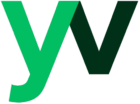Expertise Areas
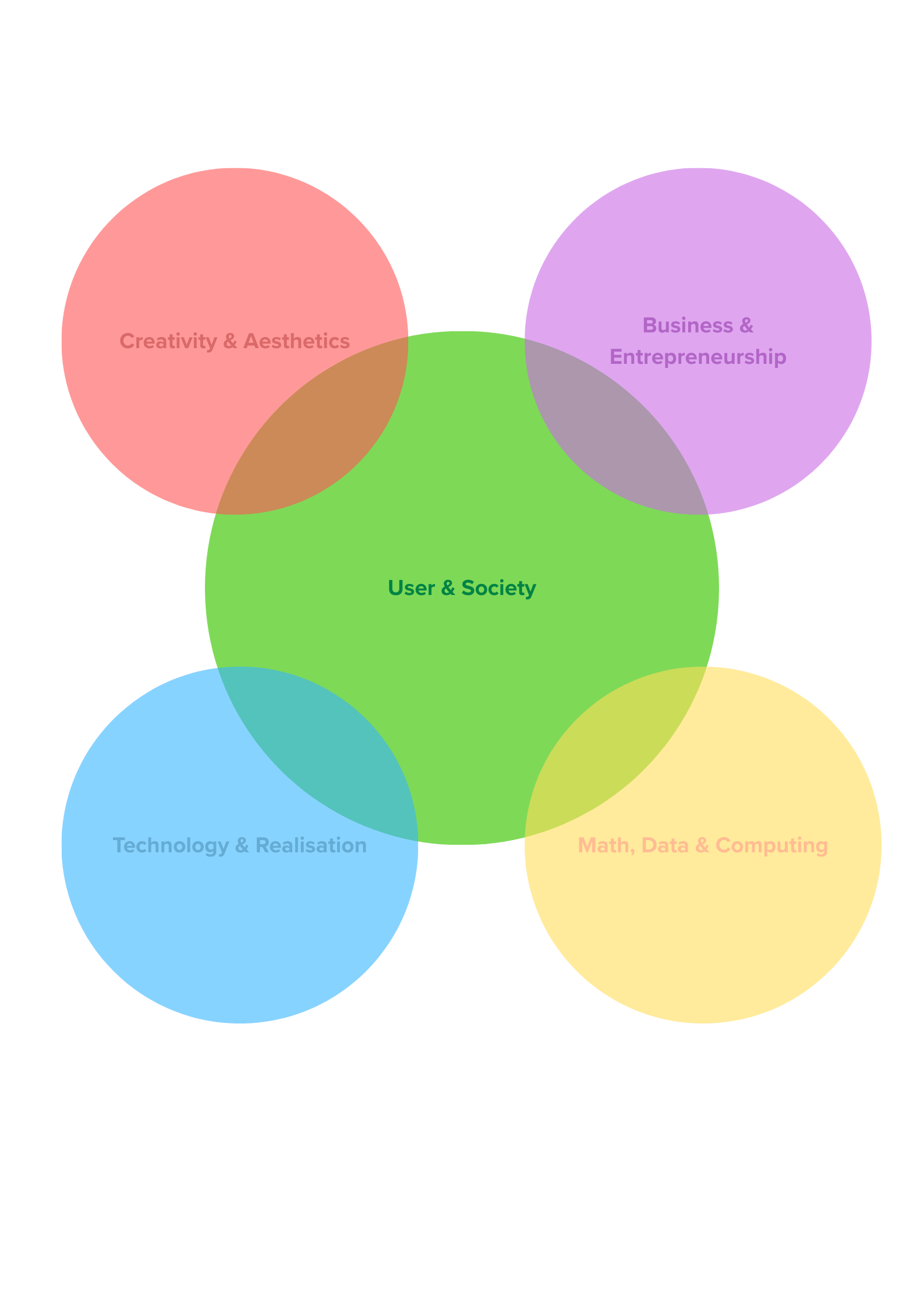
"Changing the world requires working with the people you're changing the world for. They are as much designers of the future as we are the executors of their influence."
U&S is the most important EA for me. I've sought to apply where possible in my projects. This also means I've tried to strengthen my ability to navigate its connections with all other EA's as well, to better expand my own understanding and skills within U&S. Therefore, I will discuss these connections in other EA instead of here.
By far my greatest personal development surrounding an expertise area is U&S. I realised this year as a result of the Trends and forecasting course and IDEFINE that in order for me to receive any satisfaction from my design work, I need to directly work with people and know that my work is helping people in a very direct manner. In Trends & Forecasting I learned this by getting an overview of all the potential career paths I could take as a designer, and realising that a lot of these paths were not desirable to me. In IDEFINE I worked directly with and for people, my excitement of which let me know this was a step in the right direction. This has pushed me away from product or commercial design and more towards design work with municipalities, government, and NGO’s. I’m essentially aiming for a form of social design less focused on activism and more focused on bridging the gap between affected persons and the institutions that aim to assist/represent them.
Future: Activities to further approach this goal would be to do an internship that also relates to this, (I talk about this a bit in the T&R section, but it should also be noted those internships are still focused around societal betterment and social design). I will also keep exploring the links between U&S and each other EA, by directly applying the U&S tools I've learned. What I also want to move towards, is conducting more user studies in my work, as that is a learning experience that would serve to expand and test my existing skills in this EA. (I will have to do this in my FBP, as current courses do not allow for this)
Relevant Courses/Projects Year 2
CBL3, Design <> research, IDEFINE, Sustainability & design
(Important projects can be found on the projects page)
Relevant Courses/Projects Year 1
CBL1, CBL2, Human Centered Design, ITEC: ethics of technology and Engineering
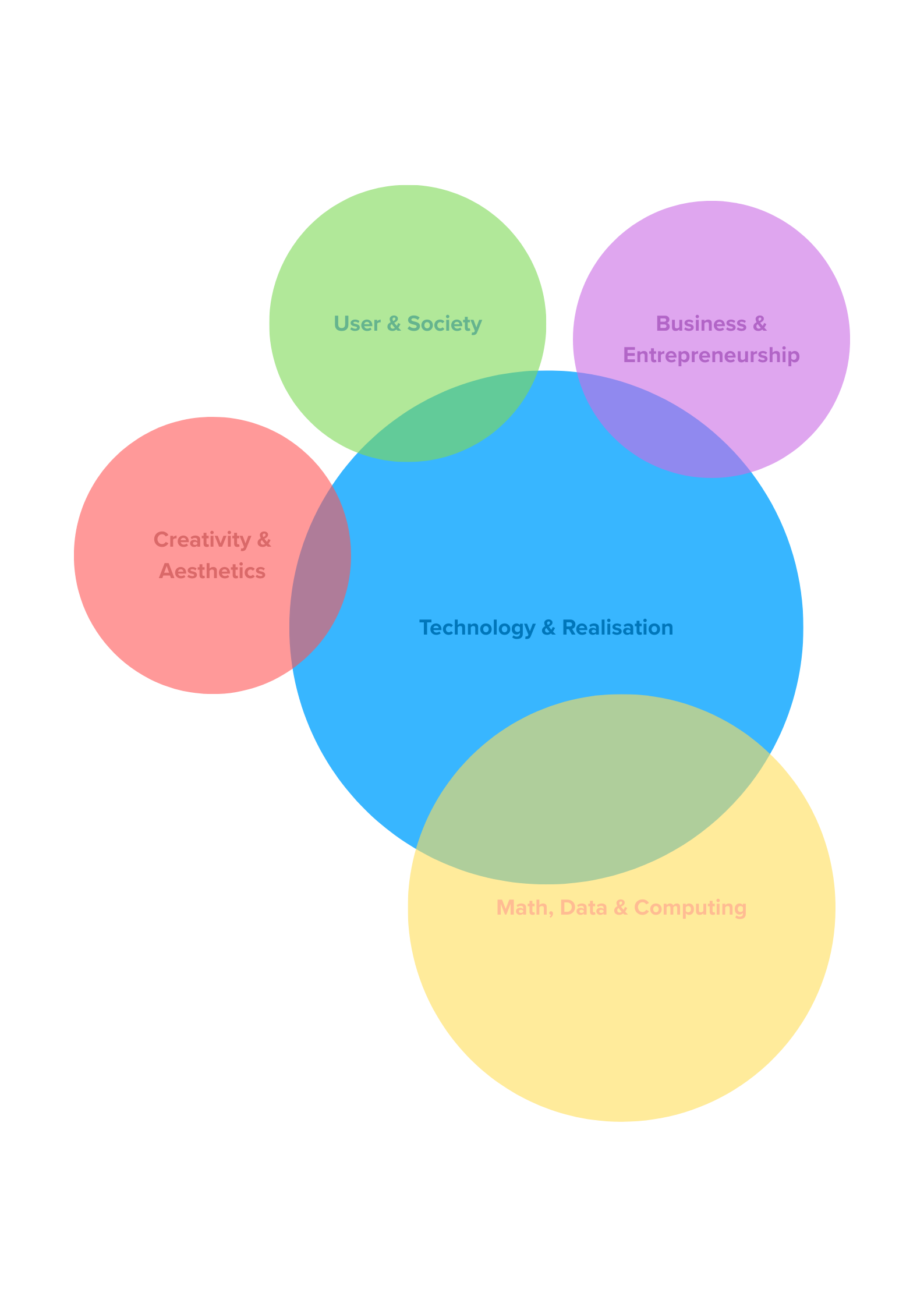
"In order to achieve societal betterment, one must consider the future, including the technology of the future. Being able to work with and design for novel technologies is therefore essentially to building a better world. In addition to having the proper knowledge of technologies to broaden the scope of potential solutions."
For me, T&R and MD&C are intrinsically linked. A lot of the courses related to MD&C are centered around working with technologies/algorithms, and the data they produce. While T&R focuses on the actual applications of technologies within products. On a practical scale, a lot of courses combine the two (i.e. CBL3, Design Connected Experiences, Intelligent Interactive Products) because they work with data on a product scale (like how I used AI in my CBL3 project "TELLUS" to communicate with the user). Like with every other EA, it overlaps with each other EA in some capacity. T&R needs to consider the user in its end product to be useful and consider C&A to make it desirable. While keeping in mind B&E for any commercial project such that technologies used are not outside the scope of budget.
In year 1, I developed my foundational skills related to the EA, but what I lacked was developing the connection between T&R and U&S. I personally value U&S a lot as the most important EA, and thought T&R (especially through AI) had large potential as a tool—not only because it can reflect the users' needs by adapting to them, but also because the technology itself can be adapted to perform so many tasks for the user. It’s a novel technology with product-level potential. Practicing this in CBL3 gave me a taste for what an AI-powered user-centric product could look like.
But I think that having worked with AI and other technologies within design, I find myself shifting. Working with the user is a step in the right direction, but what excites me more is working on the research behind the product. Gathering data, interviewing, testing—that’s what really ticks my brain.
Future: In order to further go down the path of research (and explore if it really is what I want to do), I've applied for internships that focus more on that. I've also started pushing more into the research side within my current courses. This approach, of expanding the research section of my projects is one I'm going to take (and have already taken a step towards) in my future work.Relevant Courses/Projects Year 2
CBL3, Design for games & play I
(Important projects can be found on the projects page)
Relevant Courses/Projects Year 1
CBL1, CBL2, Physics for Engineers, Creative programming, Creative mechanical engineering CBL2, Creative electronics CBL2
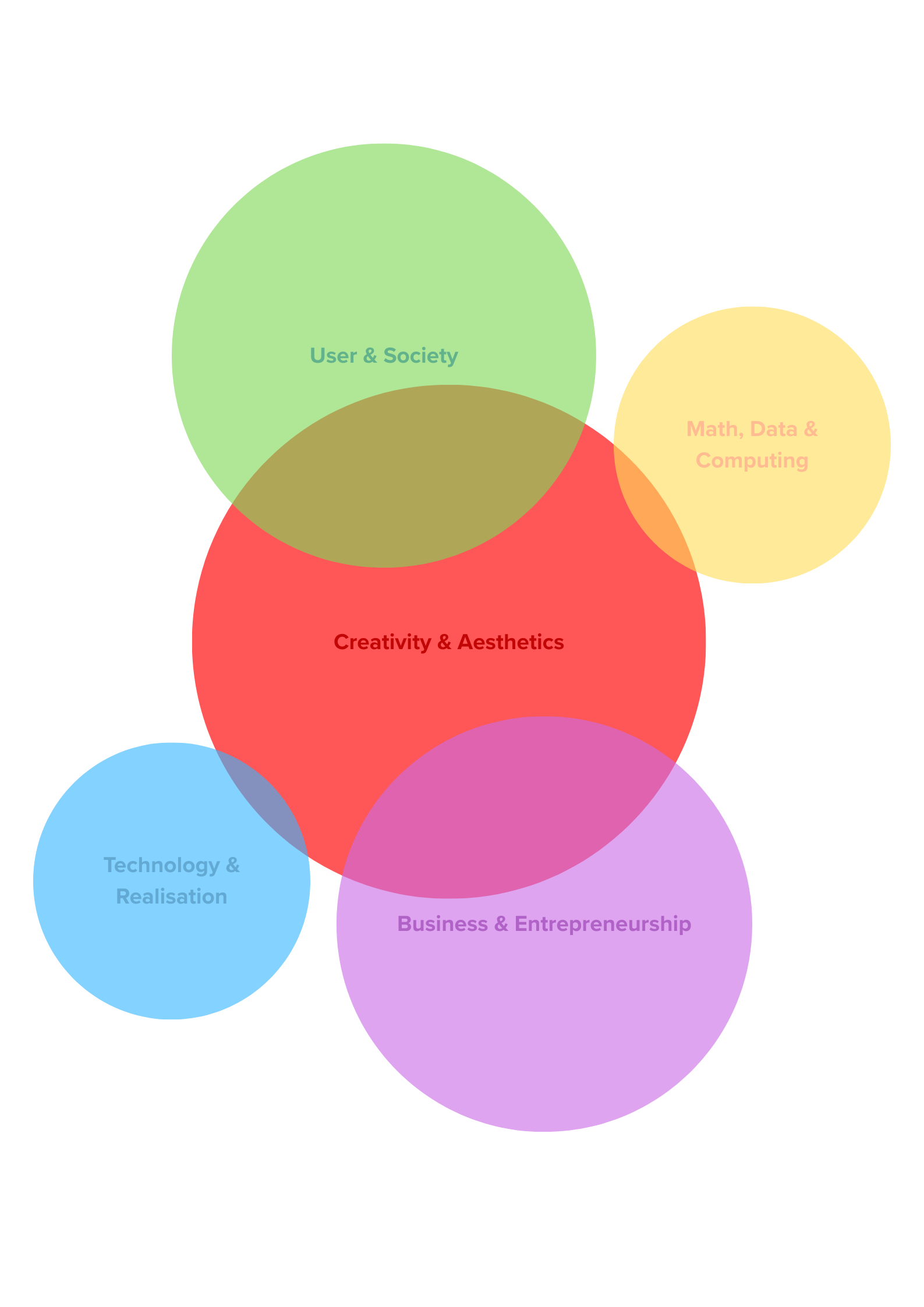
"In order to make people willing to accept change we need to ensure that change becomes desirable. Making change creatively exciting, and attractive, is a necessary element of any design wishing to achieve change."
C&A is most important to U&S and B&E. U&S because as said above change needs to be desirable, and B&E because that desirability needs to be marketable to truly achieve success. While it of course is still somewhat applied in T&R and MD&C, especially when considering how the material and structure of a product or the potential aesthetics achievable with T&R. Creativity and the methods behind it are of course foundational in all EA's.
C&A is something that was mainly developed within my first year. Like with other EA's, year 1 built my foundational skills in this EA, but it's also where I focused the most on actually improving my skillset. In year 2 it's mainly been about applying those skills within projects, with the exception of the course Aesthetics of Interaction where I did deepen my learning of how the form can give way to function by relying on nature of users.
Future: Although I didn't develop it as much this year, I'm not sure I need to purposefully develop it much more. It's already reached a point where I'm able to create nice looking reports, know how I can achieve a certain aesthetics, and most importantly know how U&S and C&A best interlink. I'm very satisfied with my development in this, and will continue to apply it as best I can in my projects.
Relevant Courses/Projects Year 2
CBL3, Aesthetics of interaction, Sustainability & Design
(Important projects can be found on the projects page)
Relevant Courses/Projects Year 1
CBL1, CBL2, Sketching CBL1
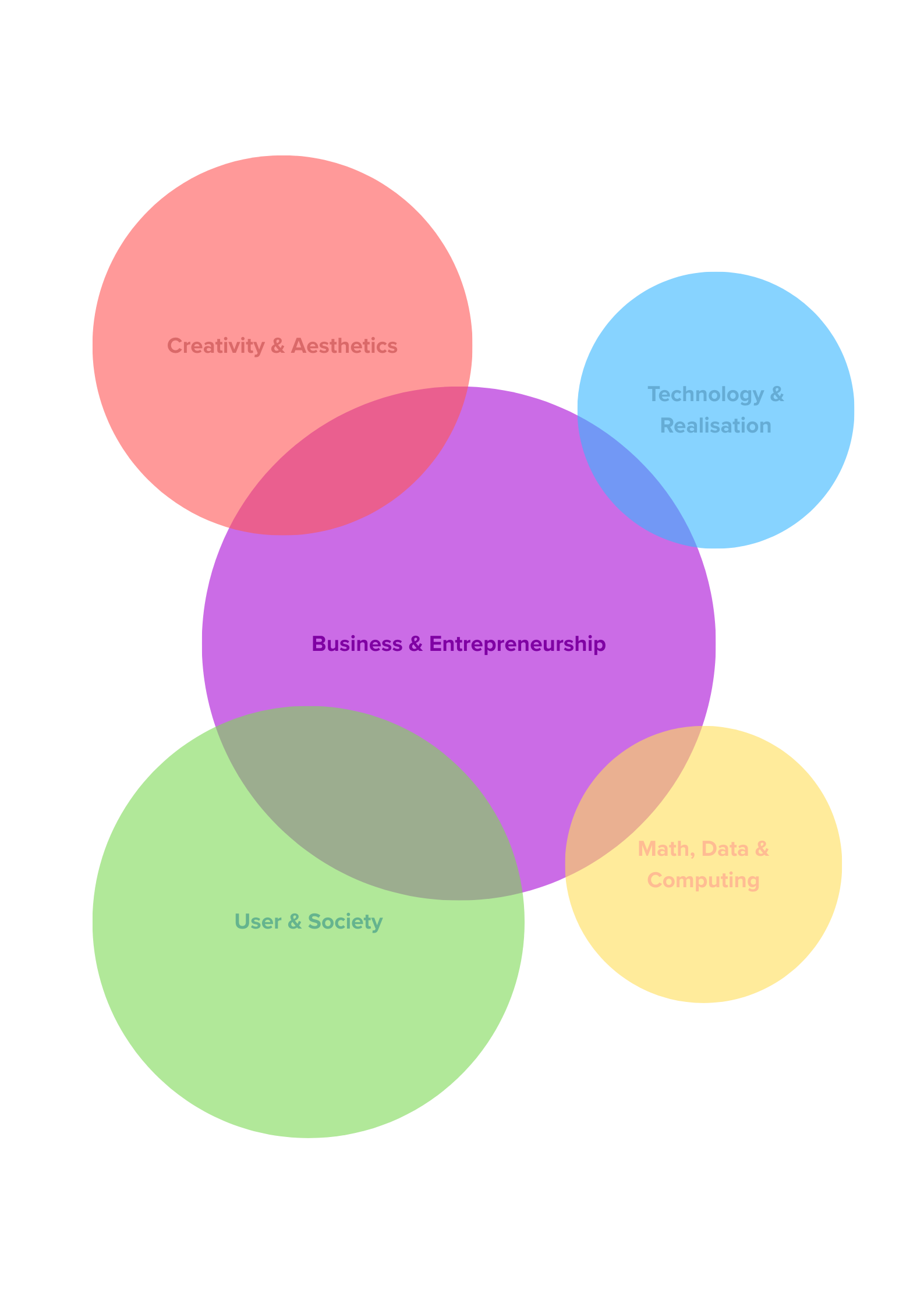
"Successfully achieving societal betterment requires longevity to ensure adequate solutions can be implemented, and future solutions have the resources to be made. Economic sustainability is therefore vital to the improving the world."
The connections between B&E and the others EA's have been pretty effectively explained in other EA's and the title of this section, so I will not elaborate further here.
Business and entrepreneurship was seen by me as a pretty irrelevant expertise area in year 1, in large part because very little to none of my courses focused on it. But having had the opportunity to engage with courses that do, I now see the value that it can have for my future work. The most relevant insights I gained were surrounding research skills in this field. As mentioned before, I am more pulled towards the research side of design, and have come to see a large portion of B&E is just research about the world to see whether a product can succeed in the world. This exact insight is something I learned from both Trends & Forecasting, and Design Innovation Methods (DIM).
Future: I believe I'm still at a point where I can grow in this EA. I'll likely aim to pick a B&E course for my elective if I can't find one more related to design research centered around users. I do consider B&E not only important because of the marketability. But the tools used can also evaluate a problem-solution fit for products and help develop a product or system to be more sustainable or ethical, or anything else that can improve society.
Relevant Courses/Projects Year 2
CBL3, Trends and forecasting, Design innovation methods (DIM)
(Important projects can be found on the projects page)
Relevant Courses/Projects Year 1
CBL1
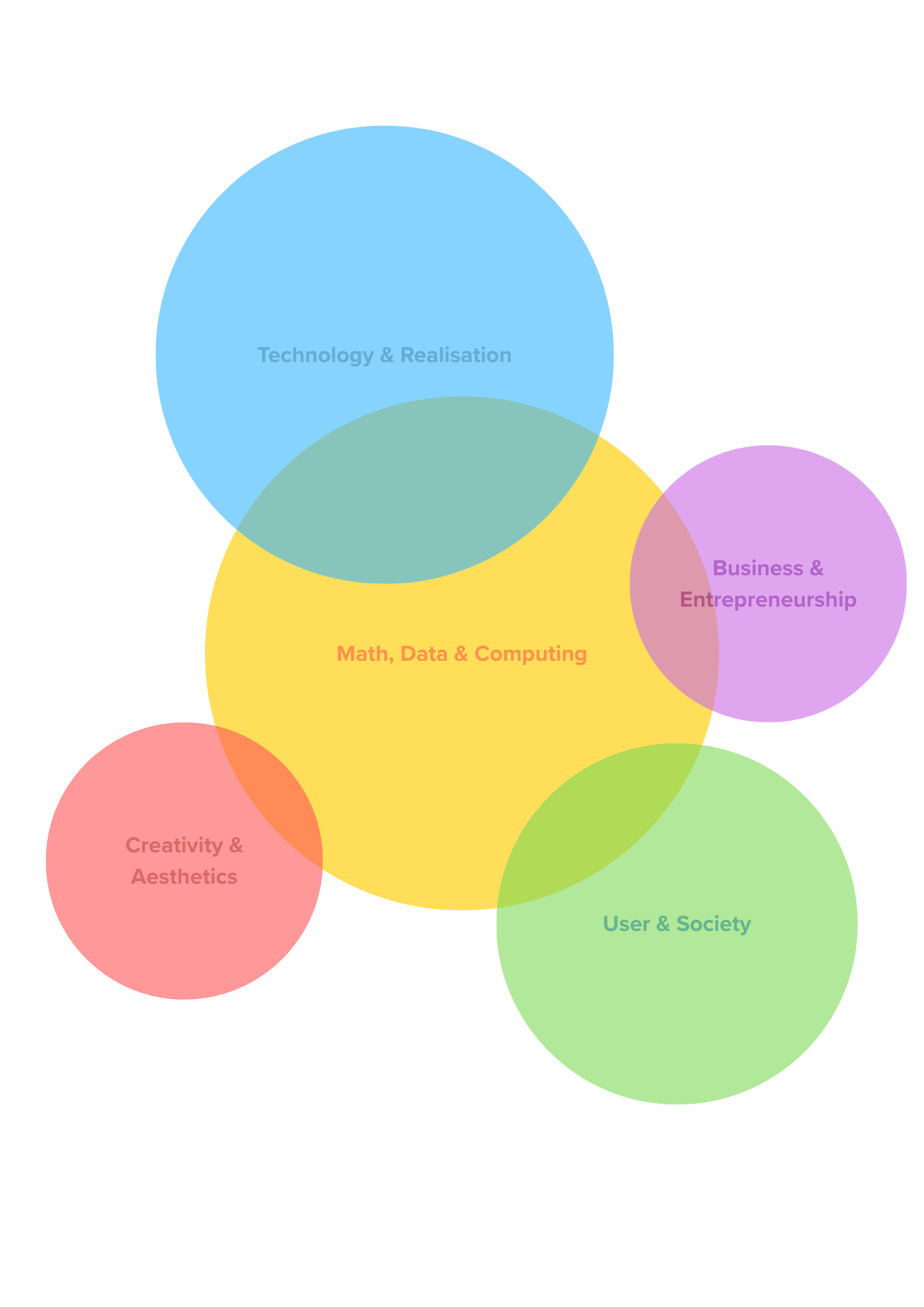
Understanding technologies and data is vital to producing effective interventions to improve societies. When dealing on larger scales, being able to effectively provide relevant solutions through data gathering, and service providing are necessary for any design solution.
As mentioned before this EA is most closely linked with T&R. It's also closely linked with U&S, as for any large-scale user study, being able to determine trends and gather conclusions from data will involve skills surrounding data analysis (for quantitative studies).
A lot of my growth in this EA is also linked to my growth in T&R, because they both deal with two sides of the same coin when it comes to working with technologies. I would say that my growth has been fairly linear across both years. There is just so much to learn, and so much to master for either of these EA's. I feel that every project and course has revealed a new side and knowledge to each EA, especially because I've partaken in so many courses and projects that involve them. (the reason for which being my desire to expand my knowledge of potential solutions to problems because knowledge in these EA's mainly deal with solutions to critical issues).
Future: On the side of technology, I'm happy with how far I've come to understanding how many solutions I can use for a project in this EA. What I now want to work more with, is working with data on user studies, and exploring what techniques I can apply to best draw conclusions from both quantitative and qualitative data. I have already explored this in Making Sense of Sensors and Design <> Research. But I feel there is more room for development there than there is with technological competence.
Relevant Courses/Projects Year 2
CBL3, Design connected experiences, Intelligent interactive products
(Important projects can be found on the projects page)
Relevant Courses/Projects Year 1
CBL1, CBL2, Calculus variant 1, Foundations of Data Analytics, Making sense of sensors
